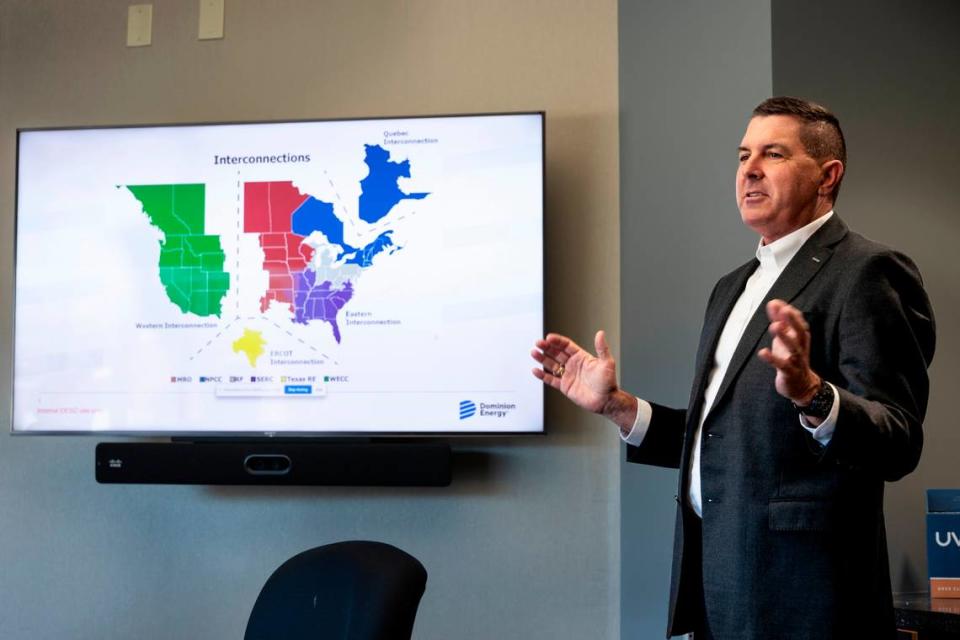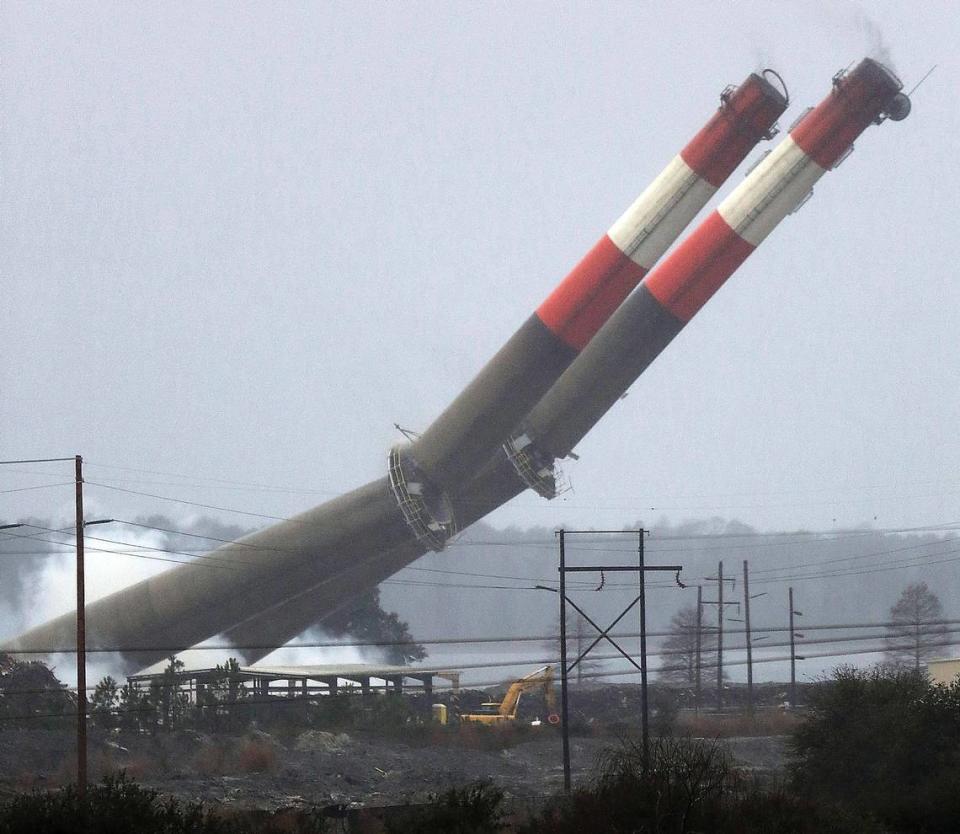SC customers could pay millions for a new power plant that may only run at half capacity
Imagine South Carolina building a large power plant to meet future electricity demand, then not being able to fully use it.
That’s a possibility under a new federal rule proposed last year to curb greenhouse gas pollution from coal and natural gas plants, say clean energy advocates who oppose a large gas plant planned for rural Colleton County. They say that under the rule, the new plant could operate at about half its capacity.
The U.S. Environmental Protection Agency is expected in April to finalize the rule that could force large new natural gas plants to capture and store carbon — or blend hydrogen with natural gas — to help reduce carbon dioxide from being released to the atmosphere.
It’s an expensive proposition that utilities have complained mightily about, saying the plan relies on fledgling technology that could be impossible to reasonably afford.
So if utilities planning big natural gas plants like the one in South Carolina don’t capture carbon or use hydrogen, they’ll have to figure another way to meet tighter greenhouse gas limits. That could mean a reduction in use of new gas facilities, environmentalists say.
Utilities could choose not to operate the big natural gas plants at greater than 55 percent capacity to meet the new EPA limits, energy consultant Anna Sommer told the S.C. Public Service Commission.
“It is my expectation that, due to cost and complexity, this will be the preferred pathway for .... compliance, over utilization of hydrogen’’ or capturing carbon, Sommer said in written testimony.
In South Carolina, depending on how and when the EPA rule takes effect, it could prompt Dominion and Santee Cooper to scale back the amount of time they operate their proposed combined cycle natural gas plant in Colleton County, said Eddy Moore, decarbonization director for the Southern Alliance for Clean Energy.
“What we expect people who just built a large combined cycle plant to do is simply run it less,’’ Moore said, explaining that the federal requirements for capturing carbon or using hydrogen are “super expensive.’’
Combined cycle natural gas plants are designed to produce more energy than traditional natural gas plants by capturing waste heat, in addition to the gas they use.. Many power companies are using them for that reason.
Spokespeople for Dominion Energy and state-owned Santee Cooper declined to speculate on how their companies would comply with the new rule. Lawsuits are expected to challenge the rule and it could be years before the matter is settled, energy providers say.
Questions about how new EPA rules would affect the proposed natural gas plant are among an array of energy issues being debated this year in South Carolina.
Power companies and many lawmakers say South Carolina needs to move quickly to build such a plant so that the state doesn’t end up with inadequate power supplies. But clean energy advocates and environmentalists say the state does not need to put so much effort into a large natural gas plant. They favor a smaller plant and increased use of renewable energy, such as solar, as well as better energy efficiency programs. They have expressed concerns that pipelines will cross ecologically fragile areas, in addition to people’s land.
Despite questions about how the plant would be used, legislators in South Carolina are racing to approve bills that pave the way for the facility in Colleton County. The House passed a bill this past week for consideration by the Senate.
The plant, to be located at an old coal fired generating station in the Canadys community, has been projected to cost at least $1 billion, but likely more, and it would be paid for in part by ratepayers.
Utilities say the state’s increasing energy demand is driving their push for the facility. But utilities say there’s little doubt the new EPA regulations will drive up their costs to operate large new plants like the one proposed in South Carolina between Columbia and Charleston.

The EPA disputes allegations that carbon capture and the use of hydrogen are unrealistic ways to reduce carbon dioxide. The agency says the new greenhouse gas rule is needed to protect people’s health and to reduce carbon pollution, a major source of global warming that is blamed for flooding, illnesses and more severe storms in places like South Carolina. The agency said the rule will provide up to $85 billion in climate and public health benefits in the next two decades.
Released for public comment in May 2023, the rule would have the greatest impact on large new natural gas plants that are designed to provide what’s known as base load capacity. That’s effectively a power plant that is designed to run at more than 50% capacity.
The proposed Colleton County gas plant, which would be up to 2,000 megawatts, is expected to be a base load facility. South Carolina’s combined cycle natural gas plant would not be completed until the early 2030s, which is about the same time the new federal rule would take effect.
Moore and others say South Carolina should slow its pace to approve the natural gas plant until it knows more about the future rules. Among those is former Public Service Commission member Tom Ervin, who resigned recently so he could speak out on the natural gas plant proposal.
“It would be tragic if we allowed Dominion to create a situation where a brand new natural gas plant in South Carolina could only operate half the time,’’ Ervin said. “But the ratepayers would still be on the hook.’’
A similar scenario unfolded seven years ago, when Santee Cooper and Dominion’s predecessor, SCE&G, charged customers for a multi-billion dollar nuclear plant expansion, then quit the project amid delays and rising costs before it was completed.
Kate Mixson, who specializes in energy issues for the Southern Environmental Law Center, said “it feels like we are really rushing through something, right before this major rule may come out. It could completely change the game.’’
It’s possible that the plant would be considered an existing facility and not fall under the rules expected out this month, although some insiders say it more likely would be considered a new plant. Initially, the proposed rule would have applied to existing natural gas facilities, but they have been stripped out, leaving only new facilities to be regulated under the plan., according to the EPA.
The EPA also has not said if it will change the proposed rule further before releasing the final version.
Utilities and key state agencies in South Carolina have been vocal about the proposed rule, which they say is unrealistic. Some contend that the rule, if adopted, would threaten the state’s ability in the future to provide a reliable power supply at a time when demand is expected to increase.
Both the state Department of Health and Environmental Control and the Office of Regulatory Staff voiced concerns in comment letters to the EPA last year. DHEC is the state’s environmental agency, while Regulatory Staff is charged with researching and commenting on the need for new plants and rate increases.
“The proposed rule spells disaster for South Carolina,’’ according to a letter to the EPA from then-Regulatory Staff director Nanette Edwards. “It is unworkable, unreasonably expensive, and creates electrical reliability problems.’’
Rhonda Thompson, DHEC’s air bureau chief, said in a letter that the EPA proposal needs to provide more time for states to put the rule in place.
The letter said hydrogen fuel at the amount needed to comply “is not viable’’ in the near future. Carbon capture and sequestration — the process of collecting carbon and injecting it into the ground — also raised concerns. Thompson said there are no studies that have identified where carbon dioxide could be injected deep underground. There are concerns that South Carolina’s geology is not suitable for disposing of carbon in the ground.
Mollie Gore, a spokeswoman for Santee Cooper, indicated that the proposed rule could be challenged in court and it could take years to sort out its impact.
“We are monitoring all proposed federal rules that might affect this or other projects,’’ Gore said in an email. “However, it isn’t practical to speculate on proposed rules that will likely change for any number of reasons before they are fully litigated and final, a process that could take years.”
Both she and Dominion spokeswoman Rhonda O’Banion said the companies are committed to reducing carbon emissions and have had success doing so in recent years. That’s been done by retiring coal-fired power plants, increasing the use of solar power and adding new technology, among other things, O’Banion said..
Gore and O’Banion said the natural gas plant their utilities want to build is important to end reliance on coal-generated energy. Coal-fired power plants generally produce more carbon dioxide than natural gas plants.

The Electric Cooperatives of South Carolina, composed of member organizations that get power from Santee Cooper, also have written the EPA about what members say is a proposal with an ulterior motive.
“It is clear EPA’s true goal in enforcing these regulations is not to encourage widespread adoption of two unproven technologies, but to coerce utilities into the widespread closure of coal and natural gas-fired plants,’’ the cooperatives said in a letter last year to EPA Administrator Michael Regan.
Utilities also question whether the rule is needed given progress they have made in reducing carbon. Utilities such as Santee Cooper, Dominion and Duke Energy have shuttered multiple coal plants in recent years. Carbon dioxide releases from the state’s power plants have decreased by more than 33% since 2001, according to DHEC.
An EPA fact sheet on the proposed rule says carbon capture and sequestration, as well as hydrogen use, are feasible ways to cut carbon dioxide pollution.
“The proposed limits and guidelines require ambitious reductions in carbon pollution based on proven and cost-effective control technologies that can be applied directly to power plants,’’ the fact sheet said., noting that “President Biden’s policy agenda has driven momentum in the power sector to cut (greenhouse gases) and is moving us closer to avoiding the worst impacts of climate change.’’

